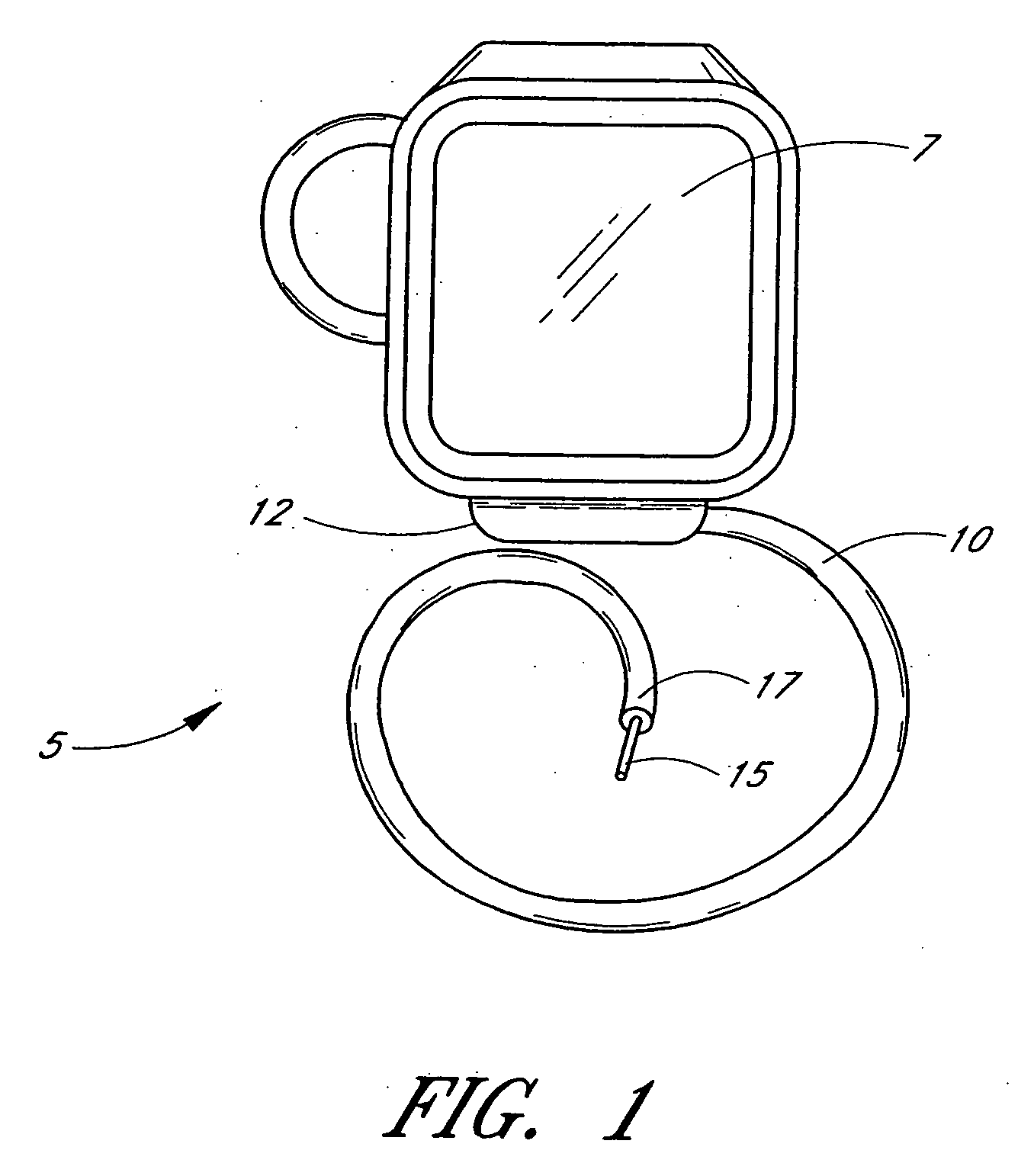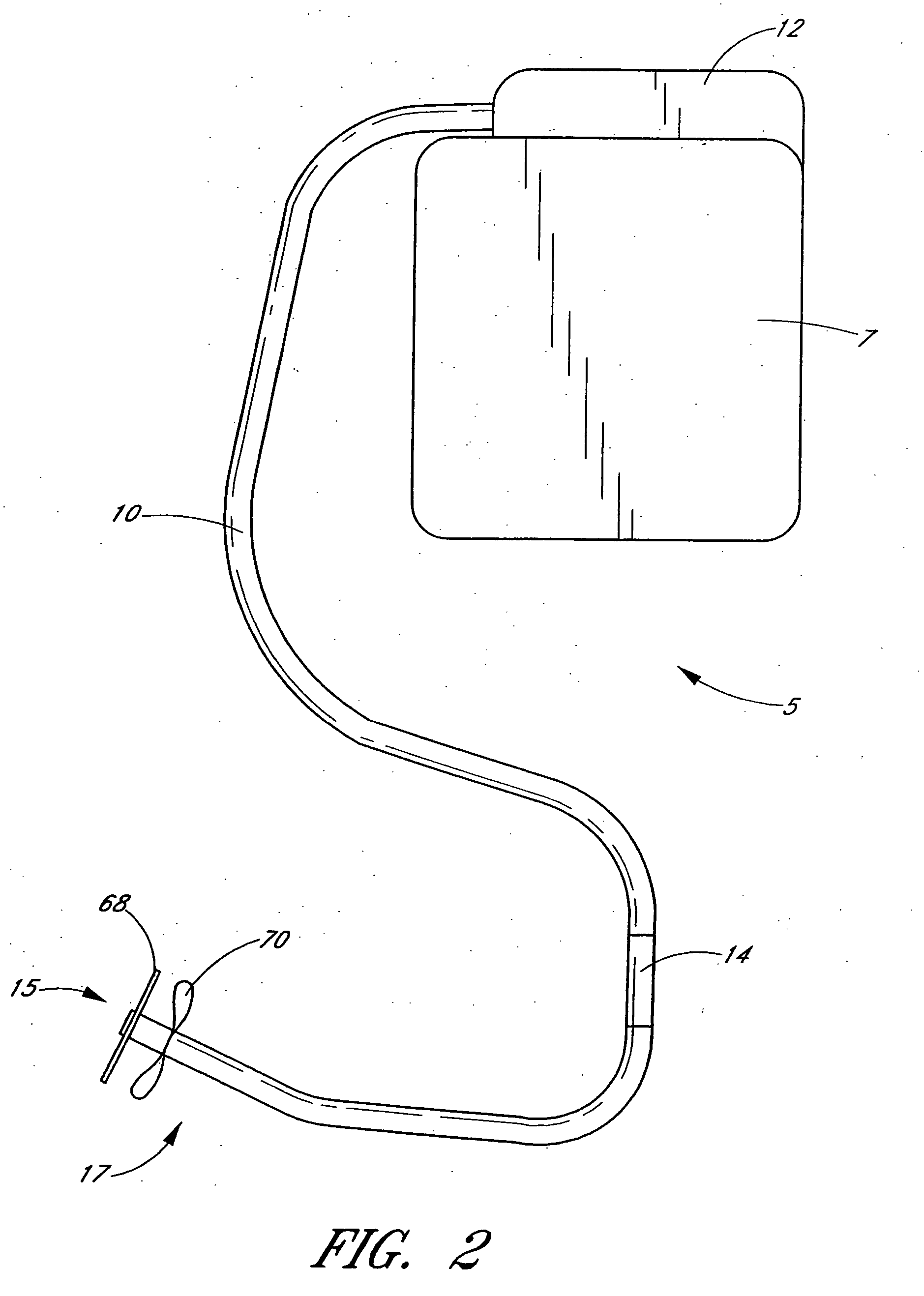Patient signaling method for treating cardiovascular disease
a signaling and patient technology, applied in the field of cardiovascular disease detection, diagnosis and treatment, can solve the problems of chf-related mortality worse than many common cancers, respiratory arrest, death, etc., and achieve the effect of preventing bradycardia or chronotropic incompeten
- Summary
- Abstract
- Description
- Claims
- Application Information
AI Technical Summary
Benefits of technology
Problems solved by technology
Method used
Image
Examples
example 1
A. Example 1
[0315] Exemplary modes of operation for an embodiment of the system of the invention are described as follows. The following Example illustrates various embodiments of the present invention and is not intended in any way to limit the invention.
[0316] In one embodiment, the system is programmed to power up once per hour to measure the left atrial pressure and other conditions as dictated by the configuration of the particular system and any other sensors that might be present. Left atrial pressure measurements are taken at a 20-Hertz sampling rate for sixty seconds, yielding 1200 data values reflective of the fluid pressure within the left atrium. The central processing unit then computes the mean left atrial pressure based on the stored values. Then, if the mean pressure is above a threshold value predetermined by the patient's physician, the central processing unit causes an appropriate communication to be sent to the patient via the patient signaling device.
[0317] A ...
example 2
B. Example 2
[0325] In one embodiment, the system is configured as an externally powered implantable device with a sensor implanted in the intra-atrial septum. The pressure transducer of the sensor is exposed to the pressure in the left atrium. In one embodiment, the sensor is anchored in the septum such that the pressure transducer is substantially flush with the left atrial wall in fluid contact with blood in the left atrium. In another embodiment, the anchor is designed such that the pressure sensor extends a predetermined distance into the left atrium. In both these embodiments, the pressure sensor package is located in the septum with its proximal end extending back into the right atrium. A flexible lead extends from the proximal end of the sensor package back through the right atrium, into the superior vena cava, up to a subclavian vein, and out through the wall of the subclavian vein, terminating at an antenna coil assembly located in a subcutaneous pocket near the patient's c...
example 3
C. Example 3
[0334] Heart failure patients implanted with the embodiments described in the above two examples may at the time of such implantation, or subsequently develop a medical indication for concurrent implantation of a CRM device. For example, required heart failure treatment with beta-blocking medication may slow the heart rate sufficiently to induce symptoms such as fatigue, or may prevent the heart rate from increasing appropriately with exertion, a condition known as chronotropic incompetence. These conditions are recognized indications for atrial pacing or atrial pacing with a rate responsive type of pacemaker. Normally this involves the placement of a pacemaker generator and an atrial pacing lead usually positioned in the right atrial appendage. In many cases, a dual chamber pacemaker is placed to synchronously pace the right atrium via one lead and the right ventricle via a second pacing lead. In other cases, such heart failure patients may have an abnormality of electr...
PUM
 Login to View More
Login to View More Abstract
Description
Claims
Application Information
 Login to View More
Login to View More - R&D
- Intellectual Property
- Life Sciences
- Materials
- Tech Scout
- Unparalleled Data Quality
- Higher Quality Content
- 60% Fewer Hallucinations
Browse by: Latest US Patents, China's latest patents, Technical Efficacy Thesaurus, Application Domain, Technology Topic, Popular Technical Reports.
© 2025 PatSnap. All rights reserved.Legal|Privacy policy|Modern Slavery Act Transparency Statement|Sitemap|About US| Contact US: help@patsnap.com



